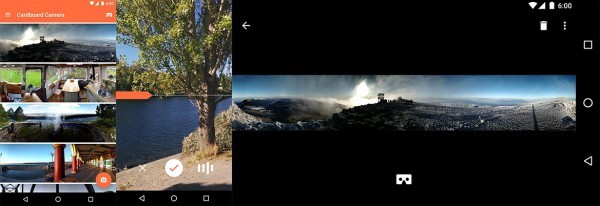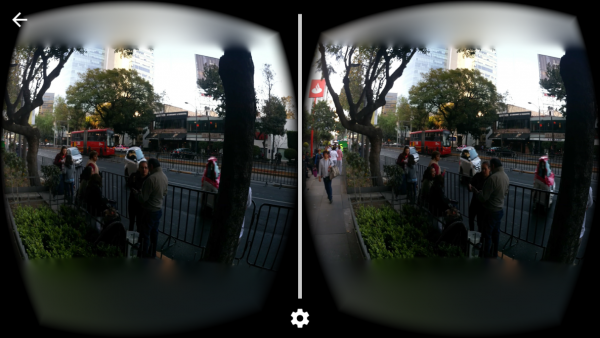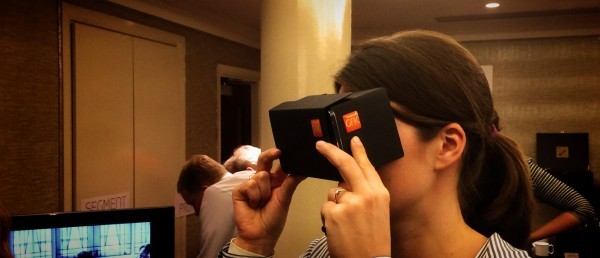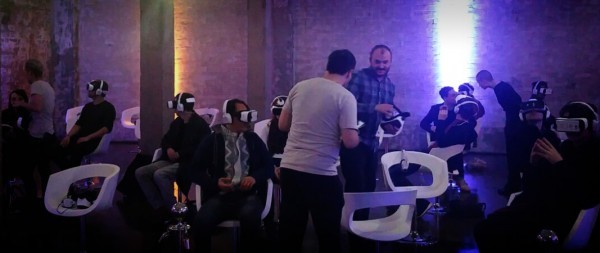Editor’s note: Simon Jones is a U.K.-based UX specialist for market research firm GfK. This is an edited version of a post written by Jones that originally appeared here under the title, “Virtual reality in UX research brings you closer to your customers.”
One of the challenges that organizations face is how to gain a deeper understanding of customers. As researchers, one way to deliver this understanding is through storytelling. We go to great lengths to convert our insights into digestible snippets. Recent advances in virtual reality (VR) have given us a new set of tools to provide a richer, more immersive story that allows you to visit the environments that your customers experience your products in.
Recently, I was in Mexico City observing a series of ethnography sessions to understand how people interact with products and services. Ethnography is designed to explore people’s needs and experiences in a much richer way than can be achieved through surveys or phone interviews.
As a researcher, I translate these observations into insights so that organizations gain understanding of their customers’ environments – how and where they use the product or service. Of course there are a number of tools that do a good job of this (photos, reports, presentations and video), but we are always looking to incorporate the latest technology if it will deliver better data or a better client experience.
A UX game-changer: the cardboard cameraYou may or may not have heard of Google’s cardboard headset, a low-cost smartphone-based introduction to the seemingly limitless possibilities of VR.
While we have been playing with this cardboard headset for some time, in December 2015 came a game-changer: the Cardboard Camera app. With this app, you can convert a panoramic video of your environment into a fully immersive 360-degree photo for use in VR. Sound is also included in this experience because it is converted from a video.
These are the visuals found on the Cardboard Camera app page in the play store.
A quick, simple and powerful immersionThis is a screenshot of how VR looks on a phone, featuring an image is of a busy street in Mexico City that I took.
The process of taking the photo is non-invasive, takes approximately 20 seconds and is fully 3D (unlike a lot of 360-degree photos which, though impressive, are nothing more than a 2D photo overlaid onto a sphere). This app is able to simulate real depth – like you’re actually there.
And that’s the point.
If you had the resources, I’m sure you would love to send your entire product or service teams to meet your customers. This would increase exposure hours and allow a deeper understanding of the challenges they face.
Of course, ignoring skewing effects of finding participants willing to invite an entire team into their homes, budgets would never extend that far. So we must find alternatives, other ways to immerse teams of people in your customer’s world beyond taped footage on a camcorder. The Cardboard Camera app single-handedly opens that door. It is a sign on the front gate saying, “Welcome to my home, this is who I am.”
I took this photo at an insights exhibition, showing a client “visiting” a participant using one of our Google Cardboard headsets.
Beyond cardboard: experiencing your customer’s challenges in real-timeThe power of a smartphone and a piece of cardboard is inspiring. As the technology advances, we must be able to see its potential. For researchers, we are aware of the usefulness of streaming services in usability lab sessions; entire teams of designers, developers and business-owners can watch in real-time how customers interact with their digital products. With VR, observation can now be extended outside the lab – to ethnography sessions and beyond. New VR cameras, 360-degree streaming services and headsets are cropping up almost weekly, so your teams can now visit willing customers and experience their challenges in real-time.
A photo I took of a group of people watching VR content together. The technology I have used to date does not facilitate group streaming events, but this is how it might look.
These technologies can enhance exploratory research in any industry with digital and physical products, services and full customer experience processes. However, VR’s reach can extend even further.
Place yourself in the shoes of those who design retail experiences, buildings, crowd flows, exhibitions or any physical product. Until recently, research and early prototypes have been largely screen-based, or VR tech has been costly and not viable for smaller research budgets. But now, participants can be truly immersed, connected and challenged in this environment and the cost is within reach of most budgets.
Using VR in research: There’s no turning backFor UX researchers, virtual reality is not just a flash in the pan. As the interactive abilities of the technology extend to hand, head, eye and body movements, the potential for building and testing environment prototypes will only increase. VR has some compelling and tangible uses that can truly enhance the way you experience customer research.




